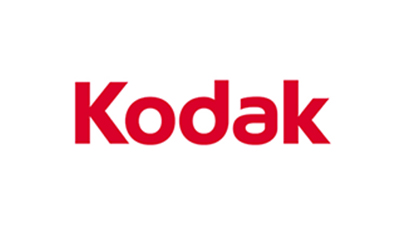
-
Report ID 138358 -
Published Date Oct. 2024 -
Delivery Format PDF/PPT/Word -
Editor's Rating
-
Report Details
Report Overview
The Global Call Centre AI Market size is expected to be worth around USD 13.5 Billion by 2033, from USD 1.8 Billion in 2023, growing at a CAGR of 22.4% during the forecast period from 2024 to 2033.
The Call Centre AI market has experienced significant growth, driven by advancements in artificial intelligence and machine learning technologies, which are reshaping customer service operations.
Key factors contributing to this growth include the increasing demand for enhanced customer experience, cost efficiency, and the need for 24/7 support. AI-powered solutions, such as chatbots, voice assistants, and automated workflows, are enabling call centers to handle high volumes of customer interactions more efficiently and accurately, reducing operational costs and improving service quality.
The integration of AI in call centers is also addressing challenges related to human resource management, such as high turnover rates and training costs. AI systems are capable of providing consistent performance, offering real-time assistance to human agents, and facilitating continuous learning and adaptation.
Moreover, the COVID-19 pandemic has accelerated the adoption of remote working models, further driving the need for robust AI solutions to maintain seamless customer service operations.
According to the survey, around 70% of customers prefer customized experiences, and approximately 75% are upset when this doesn’t happen, 85% of customers expect instant access to customer service when they call a company, approximately 60% of customers prefer calling via phone to complete transactions and 70% of customers demand natural, conversational interactions.
Key Takeaways
- The Global Call Centre AI Market is projected to reach approximately USD 13.6 billion by 2033, up from USD 1.8 billion in 2023, demonstrating a robust compound annual growth rate (CAGR) of 22.4% during the forecast period from 2024 to 2033.
- In 2023, the Solutions segment maintained a leading position within the Call Centre AI Market, commanding a market share of more than 68.5%. Concurrently, the Predictive Call Routing segment also held a significant position, capturing over 23.6% of the market.
- The Large Enterprises segment dominated the market landscape in 2023, securing more than 73.5% of the market share. Similarly, the BFSI (Banking, Financial Services, and Insurance) segment emerged as a key player, representing more than 24.2% of the market.
- Regionally, North America stood out as the leading market in 2023, accounting for over 42.6% of the total market share, with revenues amounting to USD 0.7 billion.
Component Analysis
In 2023, the Solution segment held a dominant market position, capturing more than a 68.5% share of the Call Centre AI market. This segment’s prominence can be attributed to the increasing adoption of AI-powered software solutions designed to enhance customer service efficiency and effectiveness.
These solutions, which include chatbots, virtual assistants, and automated response systems, offer significant benefits such as reduced response times, 24/7 customer support, and the ability to handle high volumes of interactions seamlessly. Companies are increasingly recognizing the value of these tools in improving customer satisfaction and reducing operational costs, driving the substantial growth of the Solution segment.
The preference for AI solutions over services is further supported by the ability of these tools to integrate easily with existing customer relationship management (CRM) systems and other enterprise applications. This integration ensures a streamlined workflow and allows for the collection and analysis of large volumes of customer data, providing valuable insights for personalized service and proactive problem resolution.
Additionally, advancements in natural language processing (NLP) and machine learning have significantly improved the accuracy and reliability of AI solutions, making them a more attractive investment for businesses aiming to stay competitive in a rapidly evolving market landscape.
Deployment Analysis
In 2023, the On-premise segment held a dominant market position, capturing more than a 58.5% share of the Call Centre AI market. This segment’s leadership is primarily driven by industries with stringent data security requirements and regulatory compliance standards, such as finance and healthcare.
On-premise AI solutions offer businesses greater control over their data, ensuring that sensitive customer information is stored and managed within their IT infrastructure. This level of control is crucial for organizations that handle highly confidential data and are subject to rigorous regulatory frameworks.
Additionally, the preference for on-premise deployment is fuelled by concerns over data privacy and the perceived risks associated with cloud computing. Many companies believe that on-premise solutions provide a more secure environment, as they are not reliant on third-party providers for data storage and management.
This is particularly important for large enterprises with the resources to maintain and operate their own data centers, allowing them to tailor their AI systems to meet specific organizational needs and security protocols.
Application Analysis
In 2023, the Predictive Call Routing segment held a dominant market position, capturing more than a 23.6% share of the Call Centre AI market. This segment’s dominance is attributed to its ability to significantly enhance customer experience by intelligently directing calls to the most suitable agents based on real-time analysis of customer data and agent performance metrics.
Predictive call routing leverages AI algorithms to match customers with agents who have the right skills and knowledge to address their specific needs, leading to faster resolutions and higher customer satisfaction rates.
The efficiency and effectiveness of predictive call routing are major drivers of its adoption across various industries. Businesses are increasingly recognizing the value of minimizing call handling times and improving first-call resolution rates.
By predicting the purpose of a call and routing it to the best-equipped agent, this AI application reduces the likelihood of call transfers and escalations, thereby optimizing operational efficiency.
Additionally, it helps in managing workforce distribution more effectively, ensuring that agents’ skills are utilized to their fullest potential, which contributes to better employee satisfaction and retention.
Enterprise Analysis
In 2023, the Large Enterprises segment held a dominant market position, capturing more than a 73.5% share of the Call Centre AI market. This segment’s leadership can be attributed to the substantial resources and infrastructure that large enterprises possess, enabling them to invest in advanced AI technologies to optimize their customer service operations.
Large enterprises often have high call volumes and complex customer service needs, making AI solutions like predictive call routing, sentiment analysis, and workforce management crucial for maintaining efficiency and high customer satisfaction levels.
The ability of large enterprises to integrate comprehensive AI solutions into their existing IT ecosystems is a significant driver of their dominance in this market segment. These organizations are better equipped to handle the upfront costs and ongoing maintenance associated with sophisticated AI systems.
Additionally, they benefit from economies of scale, which can make the per-unit cost of implementing AI more manageable compared to smaller enterprises. The focus on digital transformation and the adoption of cutting-edge technologies to stay competitive further propel the investment in AI by large enterprises.
End User Industry Analysis
In 2023, the BFSI (Banking, Financial Services, and Insurance) segment held a dominant market position, capturing more than a 24.2% share of the Call Centre AI market. This segment’s leadership is primarily driven by the BFSI sector’s critical need for efficient and secure customer service operations.
Financial institutions are increasingly adopting AI-powered solutions to enhance customer interactions, streamline operations, and ensure compliance with stringent regulatory requirements. The use of AI in call centers helps these institutions manage high call volumes, provide personalized customer experiences, and detect fraudulent activities more effectively.
The BFSI segment’s dominance can be attributed to the significant benefits AI offers in terms of operational efficiency and cost savings. AI-driven predictive call routing, sentiment analysis, and automated customer service solutions enable financial institutions to resolve customer queries more quickly and accurately.
This not only improves customer satisfaction but also reduces the workload on human agents, allowing them to focus on more complex issues. Additionally, the integration of AI with existing customer relationship management (CRM) systems provides valuable insights into customer behavior and preferences, enabling more targeted and effective service strategies.
Key Market Segments:
By Component:
- Services
- Solutions
By Deployment:
- Cloud
- On-premises
By Application:
- Predictive Call Routing
- Sentiment Analysis
- Workforce Management
- Journey Orchestration
- Quality Management
- Others
By Enterprises:
- Large Scale
- Small & Medium Scale
By End-Use Industry:
- IT & Telecommunication
- Healthcare
- Retail & E-commerce
- Energy & Utilities
- BFSI
- Travels and Hospitality
- Others
Drivers
Increasing Demand for Enhanced Customer Experience
The increasing demand for enhanced customer experience is a pivotal driver for the Global Call Centre AI market. In today’s highly competitive business environment, providing exceptional customer service has become a key differentiator for companies across various industries.
Customers expect quick, efficient, and personalized interactions whenever they engage with a company. Traditional call centers often struggle to meet these expectations due to limitations in handling high call volumes, inconsistent service quality, and long wait times.
AI technologies, such as chatbots, virtual assistants, and predictive analytics, are transforming call center operations by addressing these challenges. These AI-driven solutions enable call centers to deliver faster and more accurate responses, ensuring that customer queries are resolved promptly.
For instance, chatbots can handle routine inquiries and provide instant answers, freeing up human agents to focus on more complex issues. Virtual assistants can guide customers through self-service options, reducing the need for live agent intervention.
Moreover, AI systems can analyze vast amounts of customer data in real time, providing insights that help personalize interactions. Predictive analytics can anticipate customer needs and preferences, allowing agents to offer tailored solutions and recommendations. This level of personalization enhances customer satisfaction and loyalty, as customers feel valued and understood.
Restraint
High Implementation Costs and Integration Complexity
High implementation costs and integration complexity represent significant restraints for the Global Call Centre AI market. Implementing advanced AI technologies in call centers involves substantial financial investments in both software and hardware. AI solutions often require sophisticated infrastructure, which can be expensive to acquire and maintain.
Additionally, the costs associated with customization, integration with existing systems, and ongoing updates can be considerable, posing a financial challenge, particularly for small and medium-sized enterprises (SMEs) with limited budgets.
Beyond the initial financial outlay, the complexity of integrating AI solutions with legacy systems presents another major hurdle. Many call centers operate on outdated or distinct systems that are not inherently compatible with modern AI technologies.
Ensuring seamless integration requires significant technical expertise and meticulous planning to avoid disruptions to ongoing operations. The process can involve extensive reconfiguration of existing systems, data migration, and the development of new interfaces, all of which can be time-consuming and costly.
Furthermore, the deployment of AI technologies often necessitates substantial training for staff to effectively use and manage these new tools. This training requirement adds to the overall cost and complexity, as employees need to adapt to new workflows and systems, which can temporarily impact productivity.
Opportunities
Growing Adoption of Cloud-Based Solutions
The growing adoption of cloud-based solutions presents a significant opportunity for the Global Call Centre AI market. Cloud-based AI platforms offer several advantages that make them increasingly attractive to businesses of all sizes, particularly small and medium-sized enterprises (SMEs) that may find the high upfront costs and complexity of on-premise systems prohibitive.
One of the primary benefits of cloud-based AI solutions is their scalability. These platforms allow businesses to easily scale up or scale down their operations based on demand without the need for significant additional investment in infrastructure. This flexibility ensures that companies can adapt quickly to changes in call volume and customer service needs, maintaining high levels of efficiency and customer satisfaction.
Cost-effectiveness is another major advantage of cloud-based AI solutions. By eliminating the need for extensive on-premise hardware and reducing maintenance and upgrade costs, cloud solutions lower the financial barriers to entry.
Businesses can access advanced AI capabilities on a subscription or pay-as-you-go basis, making it more feasible for them to invest in cutting-edge technology.
Challenges
Data Privacy and Security Concerns
Data privacy and security concerns present a formidable challenge for the Global Call Centre AI market. As call centers increasingly integrate AI technologies to enhance customer service, the handling of sensitive customer information becomes more prevalent, raising significant issues around data protection.
One of the primary challenges is ensuring compliance with stringent data privacy regulations, such as the General Data Protection Regulation (GDPR) in Europe, the California Consumer Privacy Act (CCPA) in the United States, and other regional laws. These regulations impose strict requirements on how personal data is collected, stored, processed, and shared.
Call centers must ensure that their AI systems are fully compliant with these regulations to avoid hefty fines and legal repercussions. Achieving and maintaining compliance can be complex and resource-intensive, particularly for businesses operating across multiple jurisdictions with varying legal standards.
Security risks are another critical concern. AI systems in call centers process vast amounts of personal and financial data, making them attractive targets for cyberattacks. Data breaches can result in significant financial losses, reputational damage, and erosion of customer trust.
Ensuring robust security measures, such as encryption, secure access controls, and regular security audits, is essential but can be challenging to implement and maintain.
Growth Factors
- Enhanced Customer Experience: AI-driven solutions like chatbots and virtual assistants improve response times and provide 24/7 customer support, leading to higher customer satisfaction.
- Operational Efficiency: AI technologies streamline call center operations by automating routine tasks and optimizing resource allocation, reducing operational costs.
- Advancements in AI Technology: Continuous improvements in natural language processing (NLP) and machine learning enhance the capabilities and reliability of AI solutions in call centers.
- Scalability of Cloud-Based Solutions: Cloud-based AI platforms offer scalability and flexibility, allowing businesses to adjust their operations according to demand without significant upfront investments.
- Cost-Effectiveness: Cloud-based AI solutions reduce the need for extensive on-premise infrastructure and maintenance costs, making advanced technologies accessible to small and medium-sized enterprises (SMEs).
- Data-Driven Insights: AI systems provide valuable insights from customer data, enabling personalized interactions and more effective customer service strategies.
Latest Trends
- Integration of Multichannel Support: AI solutions are increasingly supporting multiple communication channels (voice, email, chat, social media) to provide a unified customer experience across platforms.
- Advancements in Conversational AI: Significant progress in natural language processing (NLP) and speech recognition technologies are enhancing the capabilities of chatbots and virtual assistants, making them more intuitive and human-like in interactions.
- Personalization of Customer Interactions: AI-driven analytics are being used to tailor customer interactions based on historical data and real-time inputs, improving customer satisfaction and loyalty.
- AI-Driven Predictive Analytics: Predictive analytics are being used to anticipate customer needs and behaviors, enabling proactive customer service and efficient problem resolution.
- Enhanced Sentiment Analysis: Advanced sentiment analysis tools are being integrated to better understand customer emotions and feedback, allowing for more empathetic and effective responses.
- Automation of Routine Tasks: There is a growing trend towards automating repetitive tasks such as data entry, call logging, and follow-ups, freeing human agents to handle more complex queries.
Regional Analysis
North America region is leading the market
In 2023, North America held a dominant market position, capturing more than a 42.6% share of the Call Centre AI market. This is primarily driven by the region’s advanced technological infrastructure and high adoption rates of innovative technologies.
The United States and Canada, in particular, are home to numerous key players in the AI industry, such as IBM, Google, and Microsoft, which are continuously investing in AI research and development. These companies are driving advancements in AI technology, making sophisticated solutions more accessible to call centers across various industries.
Additionally, North America’s strong emphasis on enhancing customer service to maintain competitive advantage contributes to the widespread adoption of AI in call centers. Businesses in this region recognize the importance of delivering superior customer experiences and are leveraging AI to achieve this goal.
The integration of AI technologies, such as chatbots, predictive analytics, and automated workflows, helps organizations streamline their operations, reduce costs, and improve customer satisfaction. Furthermore, the region’s regulatory environment supports the use of AI, with clear guidelines that ensure data privacy and security, addressing one of the main concerns of AI implementation.
Key Regions and Countries
North America
- US
- Canada
Europe
- Germany
- France
- The UK
- Spain
- Italy
- Russia
- Netherlands
- Rest of Europe
Asia Pacific
- China
- Japan
- South Korea
- India
- Australia
- Singapore
- Thailand
- Vietnam
- Rest of APAC
Latin America
- Brazil
- Mexico
- Rest of Latin America
Middle East & Africa
- South Africa
- Saudi Arabia
- UAE
- Rest of MEA
Key Players Analysis
The market has various key players that tend to drive growth and innovation in the Call Centre AI market, leveraging advanced technologies and strategic initiatives to enhance customer service operations and maintain competitive advantage.
Top Key Players in the Market
- IBM Corporation
- Avaya Inc.
- SAP SE
- Oracle
- AWS
- NICE
- Zendesk
- Jio Haptik Technologies Limited
- Nuance Communications
- Other Key Players
Recent Developments
- In February 2024, Wipro Limited announced the launch of the Wipro Enterprise AI-based Platform that tends to deliver customers an interoperable service that tends to accelerate AI adoption.
- In February 2024, Zendesk acquired Klaus focusing on the Tymeshift which is a recent tool built specifically for Zendesk.
- In February 2024, Bright Pattern partnered with Grupes to introduce robust and cooperative contact center software in the market.
Report Scope
Report Features Description Market Value (2023) USD 1.8 Bn Forecast Revenue (2033) USD 13.6 Bn CAGR (2024-2033) 22.4% Base Year for Estimation 2023 Historic Period 2019-2022 Forecast Period 2024-2033 Report Coverage Revenue Forecast, Market Dynamics, COVID-19 Impact, Competitive Landscape, Recent Developments Segments Covered By Component (Services, Solutions), By Deployment (Cloud, On-premises), By Application (Predictive Call Routing, Sentiment Analysis, Workforce Management, Journey Orchestration, Quality Management, Others), By Enterprises (Large Scale, Small & Medium Scale), By End-Use Industry (IT & Telecommunication, Healthcare, Retail & E-commerce, Energy & Utilities, BFSI, Travels and Hospitality, Others) Regional Analysis North America – The U.S. & Canada; Europe – Germany, France, The UK, Spain, Italy, Russia, Netherlands & Rest of Europe; APAC- China, Japan, South Korea, India, Australia, New Zealand, Singapore, Thailand, Vietnam & Rest of APAC; Latin America- Brazil, Mexico & Rest of Latin America; Middle East & Africa- South Africa, Saudi Arabia, UAE & Rest of MEA Competitive Landscape IBM Corporation, Avaya Inc., SAP SE, Oracle, AWS, Google, NICE, Zendesk, Jio Haptik Technologies Limited, Nuance Communications. Customization Scope Customization for segments, region/country-level will be provided. Moreover, additional customization can be done based on the requirements. Purchase Options We have three licenses to opt for Single User License, Multi-User License (Up to 5 Users), Corporate Use License (Unlimited User and Printable PDF) -
Table Of Content
Research Insights & Deliverables
 Development and Future Forecast
Development and Future Forecast Competitive benchmarking
Competitive benchmarking Company Revenue Statistics
Company Revenue Statistics Rising Regional Opportunities
Rising Regional Opportunities Technology Trends and Dynamics
Technology Trends and Dynamics Technology Assessment
Technology Assessment
-
Inquiry Before Buying
Research Insights & Deliverables
 Development and Future Forecast
Development and Future Forecast Competitive benchmarking
Competitive benchmarking Company Revenue Statistics
Company Revenue Statistics Rising Regional Opportunities
Rising Regional Opportunities Technology Trends and Dynamics
Technology Trends and Dynamics Technology Assessment
Technology Assessment
-
Request Sample
Research Insights & Deliverables
 Development and Future Forecast
Development and Future Forecast Competitive benchmarking
Competitive benchmarking Company Revenue Statistics
Company Revenue Statistics Rising Regional Opportunities
Rising Regional Opportunities Technology Trends and Dynamics
Technology Trends and Dynamics Technology Assessment
Technology Assessment














